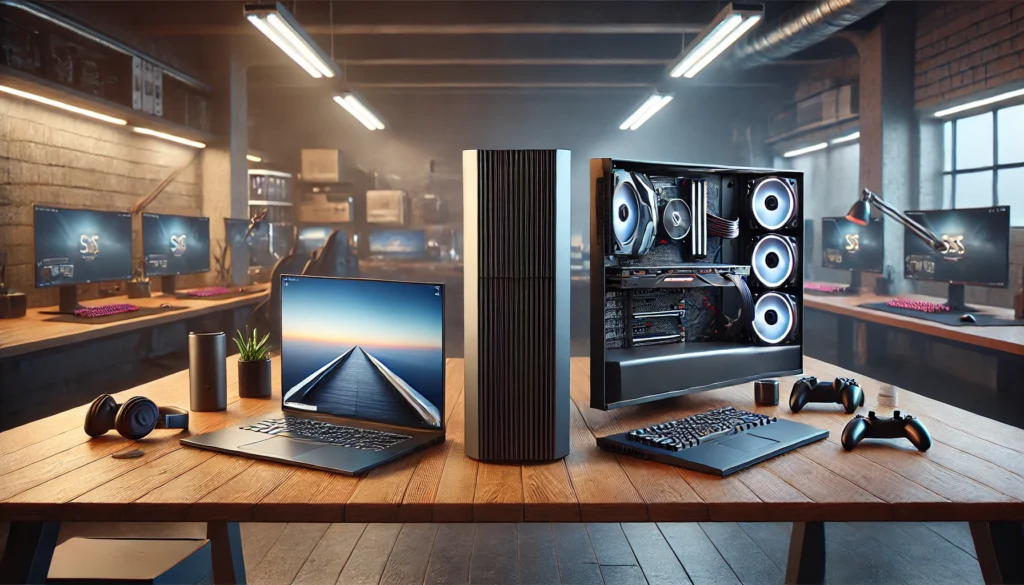Introduction
High-performance laptops and desktops play a pivotal role in modern computing. Designed to meet the needs of power users, these machines are capable of handling demanding tasks such as gaming, video editing, software development, and scientific computing. This article delves into the key aspects of high-performance devices, including definitions, comparisons, storage, RAM, problems, solutions, classifications, developments, advantages, and disadvantages.

Key Terms
CPU (Central Processing Unit): The primary processor responsible for executing instructions.
GPU (Graphics Processing Unit): A specialized processor for rendering images, videos, and animations.
RAM (Random Access Memory): Volatile memory used for running applications and multitasking.
SSD (Solid State Drive): High-speed storage technology.
Cooling Systems: Hardware that prevents overheating during intensive tasks.
Comparison of High-Performance Laptops and Desktops
1. Portability:
Laptops: Compact and portable, ideal for mobile professionals.
Desktops: Stationary but provide higher power and customization options.
2. Performance:
Laptops: Limited by size but equipped with advanced processors and GPUs.
Desktops: Superior performance due to larger components and efficient cooling.
3. Cost:
Laptops: Higher cost for equivalent performance.
Desktops: Better performance-to-price ratio.
Storage
1. HDD (Hard Disk Drive): Economical, large storage but slower speeds.
2. SSD (Solid State Drive): Faster access and boot times.
3. NVMe SSDs: Even faster than standard SSDs, ideal for heavy workloads.
RAM
Laptops: Typically 8GB–64GB, catering to general users and professionals.
Desktops: Support up to 256GB+ for high-end applications.
Importance of High-Performance Devices
Enhances productivity in professional and academic settings.
Delivers seamless gaming and multimedia experiences.
Essential for AI, data science, and other computationally heavy fields.
Problems
1. Heat Generation: Overheating during intensive tasks.
2. Battery Life: Limited runtime for high-performance laptops.
3. Upgradeability: Laptops have restricted options for hardware upgrades.
4. Cost: High-performance devices are often expensive.
Solutions
Cooling Systems: Advanced thermal management solutions such as liquid cooling.
Battery Optimization: Use of power-efficient components and software.
Customizable Desktops: Building PCs tailored to specific needs.
Budget Planning: Prioritizing essential features to manage costs.
Classification
1. Gaming: Equipped with powerful GPUs and high refresh rate displays.
2. Workstations: Designed for professional applications like 3D rendering and CAD.
3. Ultrabooks: Lightweight laptops offering a balance of performance and portability.
4. All-in-One Desktops: Combines the monitor and CPU in a compact form.
Developments
AI Integration: AI-enhanced performance for applications.
Smaller Form Factors: Compact designs with no compromise in power.
Energy Efficiency: Reduced power consumption and extended battery life.
Cloud Computing Support: Seamless integration with cloud services for storage and computing.
Advantages
Superior speed and multitasking capabilities.
High-resolution displays for immersive experiences.
Reliable performance under heavy workloads.
Disadvantages Expensive compared to standard devices.
Laptops may have thermal and battery limitations.
Desktops are less portable.
Conclusion
High-performance laptops and desktops are vital for professionals, gamers, and enthusiasts who require top-tier performance. While they come with challenges such as cost and heat management, ongoing developments aim to address these issues. Choosing between a laptop and a desktop depends on factors like mobility, customization needs, and budget. Both types offer significant advantages that can greatly enhance productivity and user experience.

